Liverpool's games are too chaotic for them to keep pace in the title race

Liverpool's draw at Chelsea was their Premier League away season in miniature: thrilling in attack, walking a tightrope in defence and generally lacking the kind of control that has helped Manchester City amass an 11-point advantage over them.
Jurgen Klopp's team led twice at Brentford before they were pegged back in a 3-3 draw; they conceded three more in a chaotic defeat at West Ham; were fortunate to escape with a 2-2 draw at Tottenham before squandering a two-goal lead at Stamford Bridge on Sunday.
Liverpool were never comfortable in the game despite scoring through Sadio Mane and a magnificent Mohamed Salah finish. They were unable to keep their opponents pinned back in the manner we have become accustomed to, with Chelsea playing out from deep with ease and making Liverpool defend in their own half for long stretches.
Liverpool were forced to play a game of moments, and it is testament to their individual quality that they still produced enough in these passages to win the game with sharper finishing.
"We should have controlled the game better," said Liverpool coach Pep Ljinders, standing in for Klopp who was absent due to a suspected Covid case. "We had moments already before the 2-0; we were lethal in our counter-attacks. In the moments we played, we really connected well and we were quick in mind, thought about the next pass."
So why are Liverpool conceding goals on the road and struggling to sustain pressure as they once did?
Numbers show a home and away split
Broadly speaking, there are two approaches to defending: try to suppress the number of shots faced, or seek to suppress the quality of those shots.
Klopp's Liverpool have always been in the first category. They want to stifle opposition attacks before they even begin, setting up camp in the other team's half and looking to counter-press aggressively to regain the ball whenever they lose it. In order to stay compact and keep the team connected, the centre-backs push up high and have to be comfortable defending space. The profile of the defenders signed under Klopp - Joel Matip, Virgil van Dijk and Ibrahima Konate - tells you what they prioritise in this position.
This approach brings a degree of risk - if a chance is conceded it is more likely to be of high quality - but Klopp accepts this gambit because of the dominance and exceptional attacking output it helps his team sustain.
Liverpool remain a serious team, facing the second fewest shots on target and conceding the second fewest expected goals behind Manchester City. Only City and Chelsea have conceded fewer goals.
There is however, a notable split between games at Anfield and those on the road. At home, Liverpool rank second for shots faced, shots on target faced and expected goals conceded, while for big chances faced they are sixth. In away matches, Liverpool drop to ninth in the Premier League for expected goals conceded and 11th for big chances faced.
The risk-reward calculation appears to have tipped into the red in Liverpool's away games, especially when they have taken the lead and should be managing games.
Midfield not strangling teams
Liverpool's midfield is on the cusp of a revamp. Georginio Wijnaldum departed last summer to Paris Saint-Germain on a free transfer, while Jordan Henderson and James Milner are in the autumn of their careers. Fabinho and Thiago Alcantara have been absent due to injury and Covid at different times.
Klopp's midfield has always fulfilled a very specific function. Liverpool's midfield three has always been more industrious than their rivals, less interested in stroking 10 yard passes around than covering for their attacking full-backs and winning the ball back. The role of lone sitting midfielder - or 'number six' as German coaches say - is crucial to provide balance.
The right-sided number eight has more freedom to overlap and get forward, allowing Mohamed Salah or Trent Alexander-Arnold to flip inside, with the left-sided midfielder typically more circumspect. Wijnaldum played that role brilliantly.
If you are committed to a high defensive line, pressure on the ball is crucial. Premier League midfielders with the time to lift their head and find players with the speed of Premier League forwards is a disastrous cocktail for a defending team.
“It does feel at times this season where Liverpool are really on the edge of it being too much,” Telegraph Sport columnist Jamie Carragher told Sky Sports.
“Now, whether that’s because the midfield this season are not getting enough pressure on the ball because I think midfield has been a problem for Liverpool this season.
“The line is still the same but they’re not getting that pressure in midfield on the ball. But if you’re not getting that pressure you’ve got to drop at times."
Liverpool's midfield looks to be less engaging though this is difficult to quantify. In first half against Chelsea, their midfield three completed just three ball recoveries and made one interception in the opposition half.
Kicking from right to left, Liverpool's midfielders made just four successful defensive interventions in Chelsea's half in the first 45 minutes. Green triangles are tackles. Henderson (14), Milner (7) and Fabinho (3).
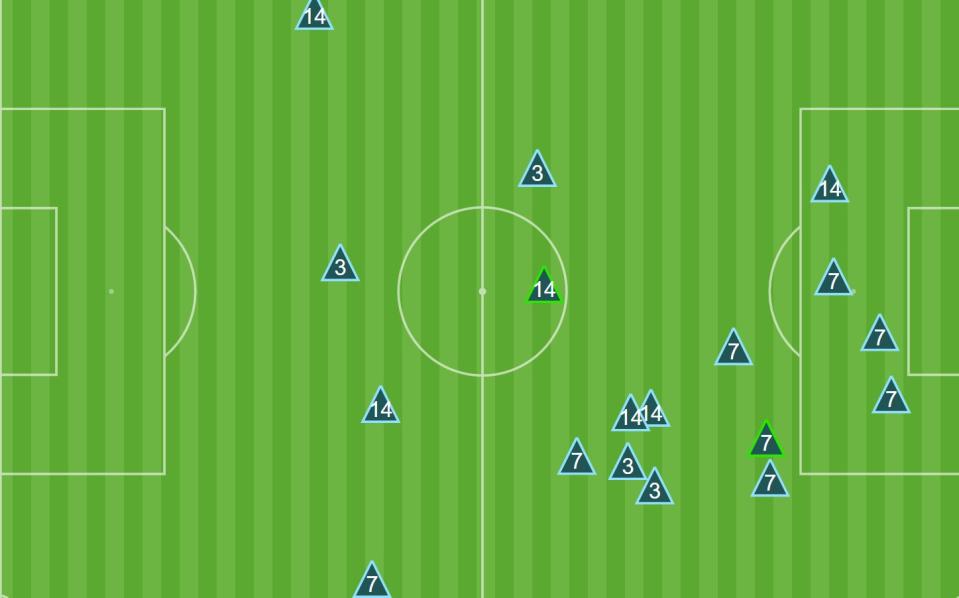
According to Opta data on Premier League midfielders who have played more than 1,000 minutes this season, Liverpool's highest-ranked player for pressures is Henderson who is 30th in the rankings.
We should be wary of over-indexing this fact; Liverpool are one of the dominant sides in the country and monopolise the ball in most games. Pressing is also a collective endeavour and far more complex than sprinting to the man in possession. It is about funnelling teams into advantageous areas and cutting off passing lanes.
The fact Bruno Fernandes and Fred lead the league's midfielders for pressures, and Manchester United's pressing has looked so disjointed, is evidence of this.
Nevertheless, is it a coincidence that Liverpool's leading midfielders for pressures - Curtis Jones, Alex-Oxlade-Chamberlain, Naby Keita and Harvey Elliott - are also their youngest? Liverpool's engine room looks in need of fresh energy.
The high line and James Milner's struggles at Chelsea
It is convenient to separate a team's performance in and out of possession, but often they are two sides of the same coin. If you do not retain the ball well enough, the team does not get into shape to counter-press and you can be vulnerable on the break. Axiomatically, it is also difficult to have the ball if you are not winning it back.
Ljinders' focus was on Liverpool's play with the ball in his post-match press conference: "I think the problem was we didn’t keep the ball for long enough in many moments when we went to their half because that’s the moment they have to push wing-backs back in and that’s the moment where we can really also rest with the ball. This balance was not right today."
Chelsea were able to complete 248 passes in the first half at 81 per cent, a completion rate which increased to 82.4 per cent by the end of the game. Liverpool were not able to affect Chelsea's fluency to the same extent they usually do. Liverpool's opponents average 73.6 per cent pass completion this season.
Mateo Kovavic and N'Golo Kante completed 72 passes between them in the first half. Liverpool's top three passing combinations in that half featured goalkeeper Caoimhin Kelleher which tells you the pattern of general play.
Both teams tried to condense space by pushing high up the pitch, but the game was played at such a tempo it was impossible for either to control every transition. Both teams' high defensive lines were breached on multiple occasions.
One player who had a particularly difficult afternoon was Milner. Early in the game, it looked as if he was asked to drop into a more conservative position, possibly to prevent Mason Mount collecting the ball in the right half-space inside Alexander-Arnold.
In this passage of play, Milner (in front of linesman) has actually dropped into the backline which might explain why Liverpool were struggling to get against the ball in midfield. In this example, they are actually in a 5-2-3 shape.
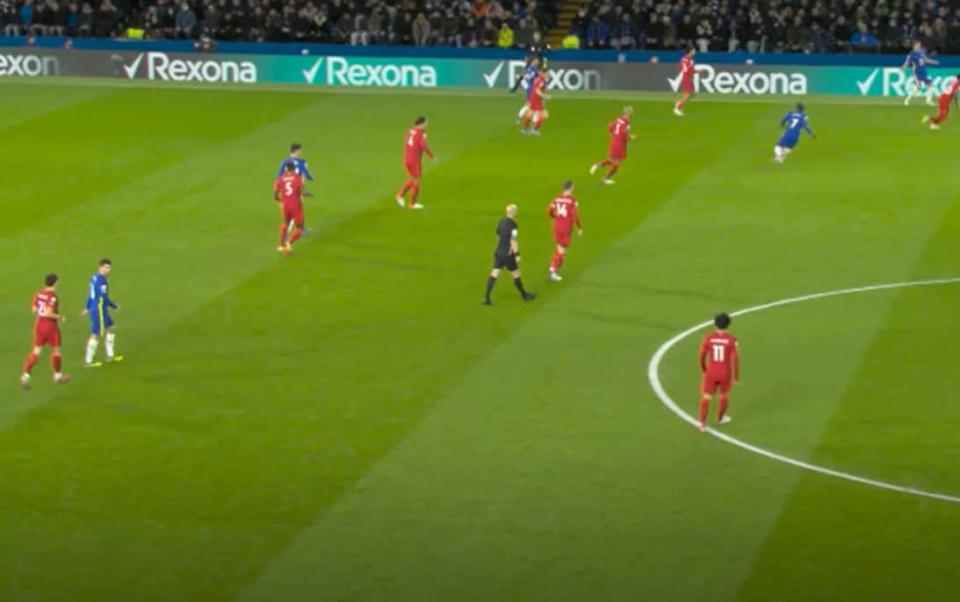
This did not last, with Milner trying to affect the game in a more orthodox way, but like Liverpool as a team he was often too late to arrive and Chelsea played around him. One problem he had was knowing whether to press one of the Chelsea central midfielders midfielders or wing-back Cesar Azpilicueta. In this example, he plants his body weight in Azpilicueta's direction allowing Kante to skip past him.
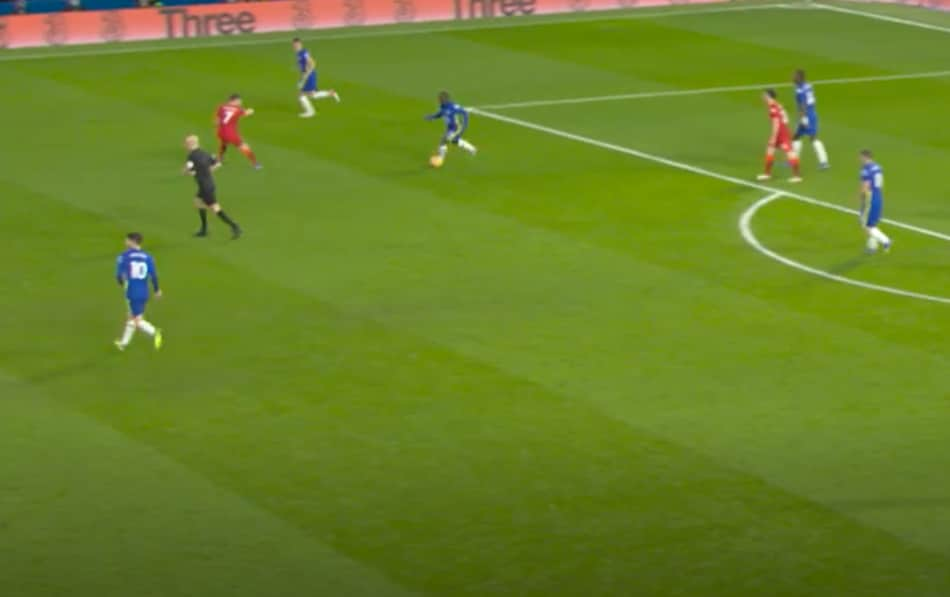
Fabinho is isolated centrally and has to step out and engage, leaving Christian Pulisic free to receive between the lines with that Liverpool high line ripe for plunder. A well-matched run and pass and it could have been a goal, and this was not the only incident. Van Dijk and Konate were not on the same page.
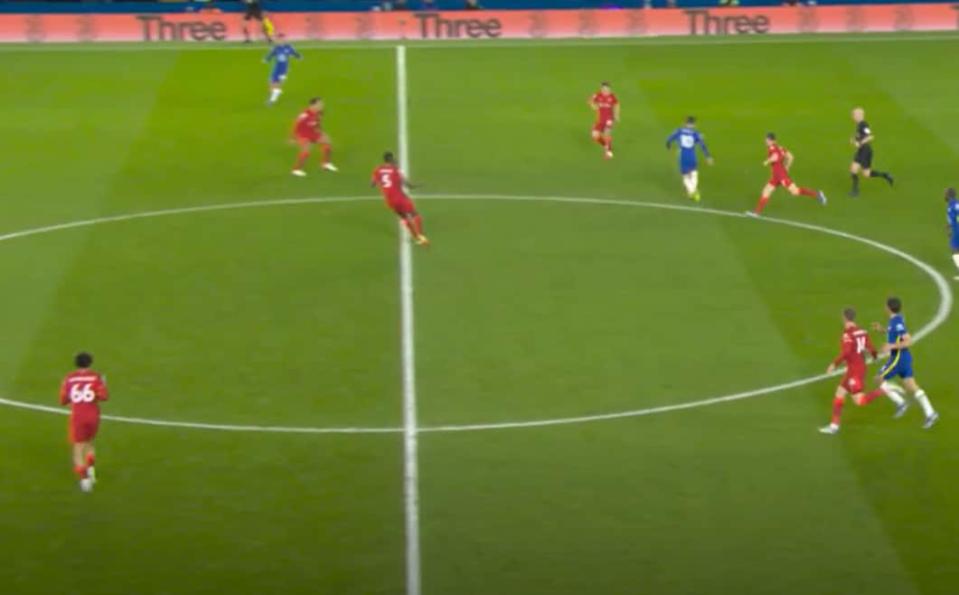
Those frailties in the high line were exposed for Pulisic's equaliser just before half time, when Van Dijk failed to cover for Konate and there was simply too much space to cover between the centre-backs.
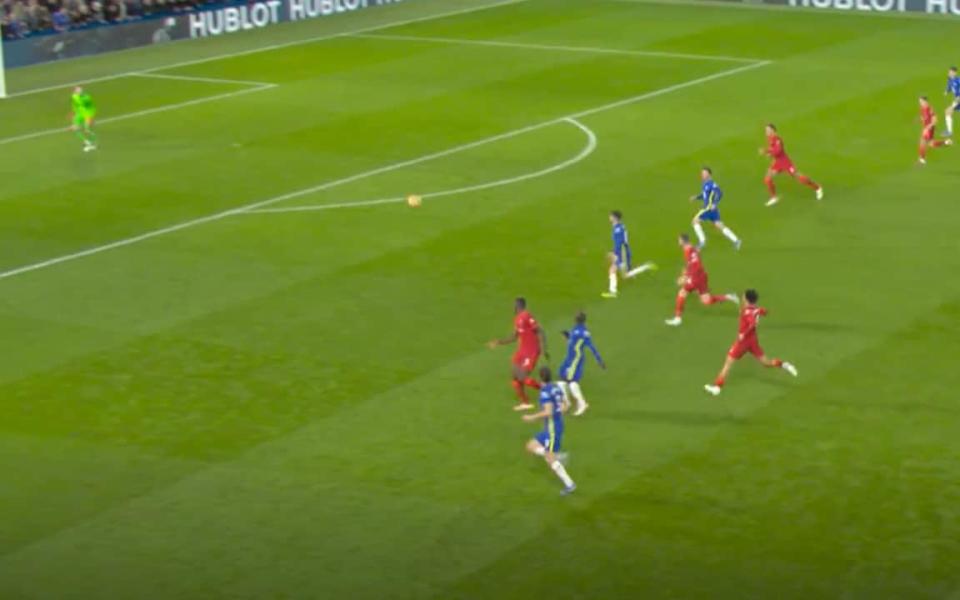
“The reason Virgil van Dijk can’t get across is because initially he is walking," Carragher said on Sky.
“He’s not on his toes, he is walking and then the gap between him and Konate is just too big and he’s never going to get there.”
Too often Liverpool's timings were off defensively and the three departments of their team not connected, perhaps understandably given their disrupted preparation. While they may possess some outstanding individual defenders with powers of recovery, it is leaving too much to chance.

 Yahoo Sport
Yahoo Sport 





































